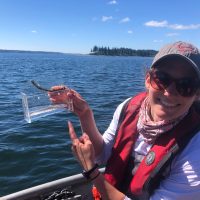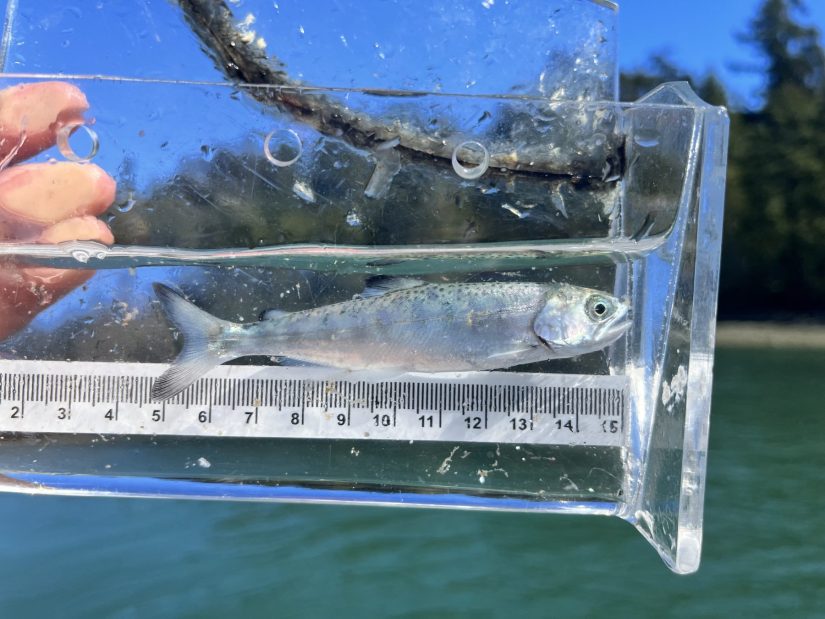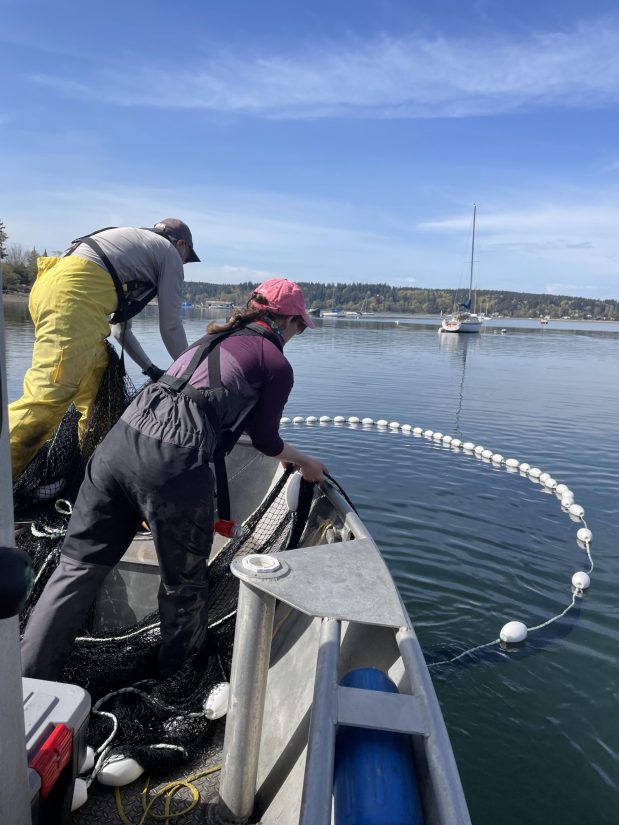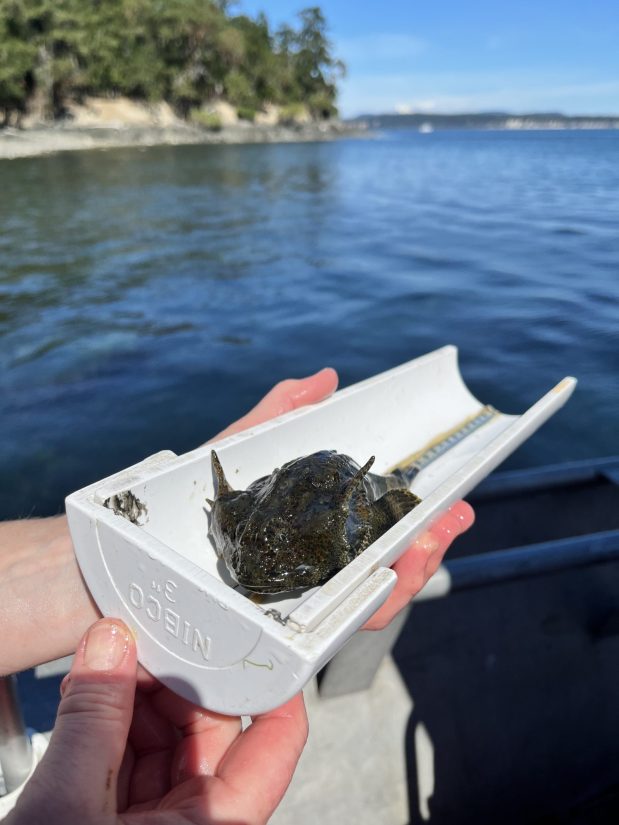Near or far: how is fish abundance affected by shoreline armoring?

Conducting fieldwork as part of a project funded by Washington Sea Grant, Emily Bishop, a masters student in the Marine Conservation and Ecology Group at SAFS, is exploring the effects of shoreline armoring on nearshore fish abundance.
Shoreline armoring is the term for structures that landowners install on their beaches to prevent erosion and preserve property extent. These structures change the physical characteristics of the beach, potentially making the habitat lower quality for fish that use shallow water to avoid predators, or to feed on terrestrial insects.

With lead researchers including scientists from NOAA Northwest Fisheries Science Center and SAFS affiliate professor, Tessa Francis from the Puget Sound Institute at UW Tacoma, the team wanted to find out whether fish were avoiding these potentially low-quality areas in nearshore waters around Puget Sound adjacent to armored shorelines.
This project involved four years of field sampling, and Emily has been a part of the project for the last two years. The research team used a lampara net (a modified beach seine) to catch fish at different depths offshore from armored, restored, and reference shoreline segments at 12 different sites around the Southern Salish Sea. The sites ranged from Olympia to the San Juan Islands, and they went out once a month to net fish and count and measure them.

Emily is using the data collected to relate abundance of fish to extent of shoreline armoring at different spatial scales to see if she can find which scale matters most to fish. Would a small-scale restoration project benefit nearshore fish, or is the removal of greater amounts of armoring throughout a region needed to see a positive effect? That’s the question they’re hoping to answer!
